Now that the spring semester is coming to an end, it is time for me to reflect on my experience during my learning project for EDTC 300. As most of you already know, I chose to learn how to cook for this project. I chose cooking because it is a useful skill that I have been wanting to work on for a while. I was not disappointed with my choice. Over the past six weeks, I have not only learned how to cook a variety of dishes but I have also learned how to use technology to find helpful resources that made my experience so much easier. This project also helped me get a lot more comfortable with using WordPress. I learned how to add photos and hyperlinks to my posts which made them a lot more interesting to read! So to bring my cooking project to an end I am going to break it down week by week to review everything that I’ve learned and accomplished.
Week 1: Intro to my learning project
This was the very beginning of my journey. In this post, I explained in detail my reasoning for choosing to learn how to cook. I also laid out a plan of the dish that I would make each week, getting progressively harder as the weeks went on. This helped me to be able to meet my goals and get to my desired end result.
This was probably my most challenging week, as knowing when various meats are cooked is something I struggle with. To test out some different resources I found, I made three different dishes this week. I learned that pictures and estimated cooking times are what helped me the most. The oven-baked chicken breast recipe was especially useful this week as it had an entire section dedicated to showing how to know when they were cooked.
Week three was a homemade tomato sauce. I really enjoyed making this as I can use it for so many different things in the future. I loved how fresh this sauce tasted compared to store-bought sauces. This recipe had a video that I followed along while cooking which made it really easy.
Week 4: Comfort food from scratch
This week I decided to make two kinds of random dishes. The first one was cream of broccoli and cauliflower soup and the other was homemade apple pie. Both staple dishes that I thought would be useful to know how to make. Cream-based soups can be tricky to make so I was glad to have found this video that I was able to follow and cook along with! Next came Desert! Apple pie is one of my absolute favorites so I really enjoyed making this. I learned that the quality is all in the dough. I found a super easy sour cream pie dough recipe that turned out to be delicious!
This was definitely my most adventurous week! I had never tasted risotto before and I didn’t even really know what it was but at the request of my bf, I decided to give it a shot! I really enjoyed making this dish because it was so new to me. It was also a special week because Katia had asked us to make our post into a learning tool for others. I decided to make a video tutorial and made it look kinda like those you see on cooking shows by using fancy dishes and such. I had fun with it. This was my first time ever making and editing a video for Youtube so I learned a lot and got familiar with iMovie in the process.
Week 6: Winner, winner, chicken dinner
This week was the grand finale of my learning project. I made a full roasted chicken dinner with all of the fixings for my family on Father’s Day. I enjoyed this week as it was more challenging to have several things going at once. I found myself turning to my mom for advice more often this week. My biggest challenge with this was trying to make sure everything was done around the same time. This site helped me out a lot with this as it told me how long my chicken would actually take to cook.
Main takeaways from this whole process:
- Commenting is not so bad: I wasn’t really on board with having to comment on my classmates’ blogs consistently for 6 weeks. However, as the course progressed I found myself checking in on blog hub every day to see how others’ projects were coming along. I thoroughly enjoyed following others’ learning journeys and reading their posts helped me out a lot when it came to writing my own.
- I am capable of more than I think: I was very nervous about having to teach myself a new skill using online resources. I tend to shy away from trying new things on my computer so this project was a real challenge for me. I soon discovered that it is much easier than I thought. Katia really guided us through everything we would need to be successful in this class and for that, I am very thankful.
- There are so many helpful resources available online: Youtube videos and video links from recipes are what got me through this project. I was pleasantly surprised by how easy it was to find exactly what I needed. It turns out that a lot of people learn how to cook online so most of the questions I had, were already asked and answered somewhere and all I had to do was find them.
- Cooking isn’t so bad: This is probably the most important thing I have taken away from this project. The goal I set for myself at the beginning was to learn to like cooking. I feel that I have a good start on this now thanks to EDTC300. This project gave me a reason to push myself to try things that made me uncomfortable. I have now seen how easy it is to find resources to help me out and make cooking a lot less difficult.
Thank you to Katia and all of the other EDTC300 students who have followed me on this journey! The helpful and supportive comments were always nice to read and they kept me motivated and excited to continue on with my project.
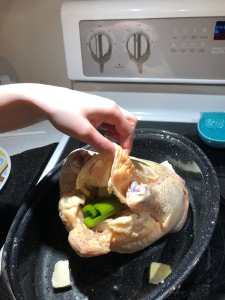




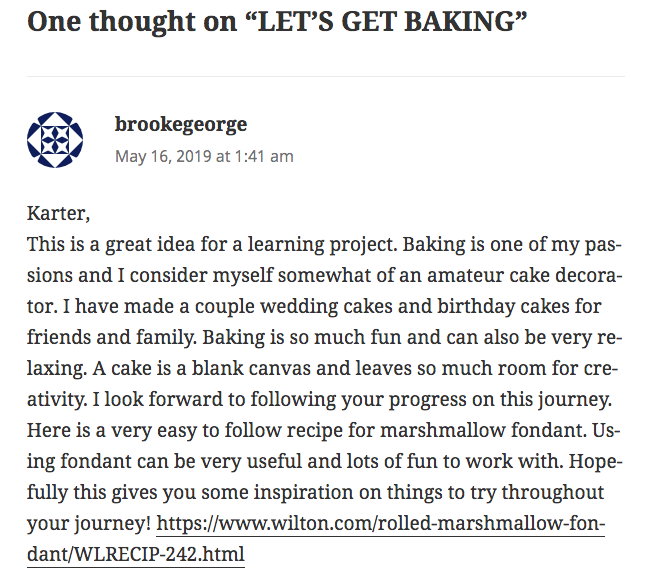









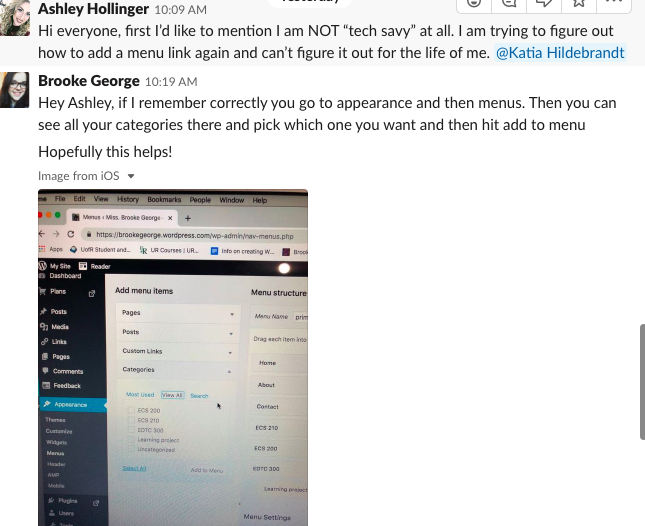



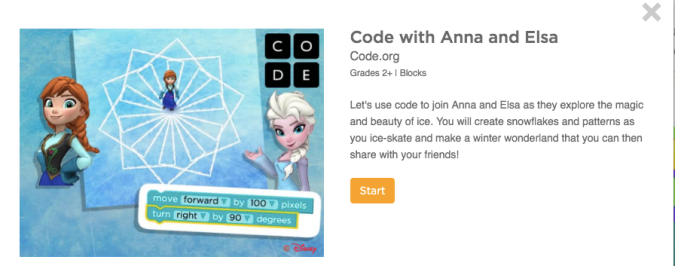


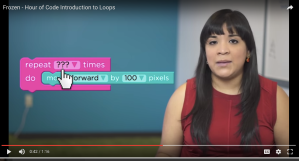


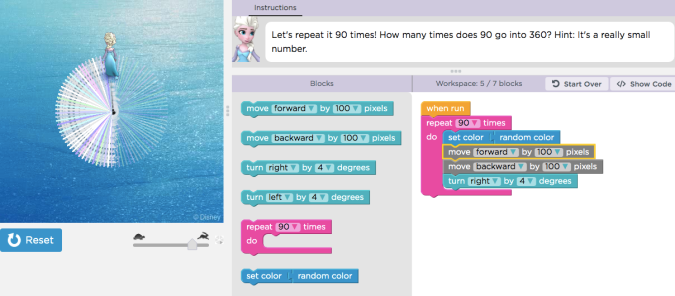




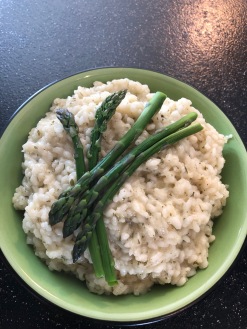







 The tricky part of making pie is the crust. I followed along with this
The tricky part of making pie is the crust. I followed along with this 
